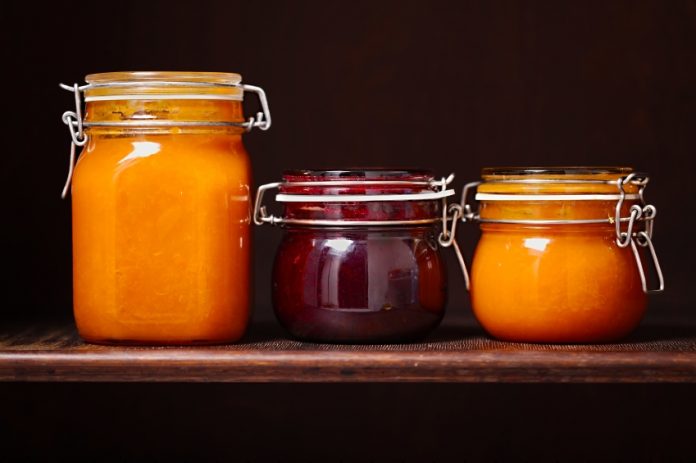Say good-bye to a freezer full of Ziplocs, Tupperware, and plastic wrap. There’s another, much greener way to freeze food.
Plastic still dominates in the freezer, where Ziploc bags and plastic wrap are easy solutions for sealing nutrients and moisture in food and protecting from freezer burn. This convenience comes with a few problems, though, including leaching chemicals (bisphenols A and S) and excessive waste. Plastic wrap tends to be single-use and Ziploc bags don’t last forever. They end up in the trash, impossible to recycle.
Going plastic-free is a better solution and much easier than you may think. There are a number of good options available, many of which you may already have at home.
Glass
Mason or Ball jars are very good for freezing, as long as you use the wide-mouth variety and do not fill to the very top. Leave a good inch at least for the contents to expand. When I fill Mason jars with homemade stock, I leave them open in the freezer for a few hours before screwing on the lids. It is also recommended to pour a 1/2-inch of water over any frozen food in a glass jar to provide further protection from the freezer air; rinse off this ice seal with warm water before thawing the rest of the contents.
Other kinds of jars are not recommended, since the glass is usually not thick enough to withstand expansion. You might experience some breakage until you get the hang of it, but it’s a small price to pay for going plastic-free.
You can buy rectangular glass storage containers, but most come with plastic lids. At least they’re indefinitely reusable and don’t have to come into contact with the frozen contents.
Metal
Metal is great in the freezer. You can put opened cans of food directly into the freezer (it’s safer than storing food in a can in the refrigerator). It thaws quickly in a dish of hot water.
I’ve also fallen in love with these Korean-made stainless steel food storage containers that are airtight, watertight, and freezer-proof. They come in various sizes with a silicone seal that continues to seal well for me after several years of hard use. They are not cheap, but they are by far the favourite containers in my kitchen.
Use metal ice cube trays, muffin tins, or bread tins to freeze smaller quantities of food; then transfer to a container or wrap well for longer-term storage.
Related: Foods You Can Freeze For Later
Paper
If you are freezing food for a shorter period of time (2-3 weeks at most), you can wrap in unbleached butcher paper or waxed paper sheets or bags. Butcher paper doesn’t seal the food as well as waxed paper, but it makes a good first-layer wrap. Double or triple for longer freezing periods. Seal any kind of paper wrap with freezer tape.
Aluminum Foil
Foil is fragile, and if there’s a single hole that can mean freezer burn for whatever it contains; but if you’re careful with wrapping, foil is a great option for the freezer. Use heavy-duty foil instead of regular thickness, and seal well with freezer tape.
(Note: I tend to avoid foil because it cannot be recycled locally and ends up in the trash.)
Waxed Cartons
You can reuse waxed milk, juice, and cream cartons in the freezer. They are especially good for stocks and soups, since they allow for expansion and are waterproof. Cut open at the top, wash out well, and seal up with freezer tape. As with all opaque containers, be sure to label clearly so you know what’s inside.
(On a similar note, you can freezer cartons of milk and cream if they are close to expiry.)
Package-free
Many fruits don’t need packaging of any kind in the freezer, such as tomatoes, bananas, and peaches. Even better, their skins will slip off easily once thawed.
I learned this last summer when someone gave my parents a bushel of peaches just as they were about to leave on a camping trip. Mom had no time to can or prep the peaches for freezing, so she threw them whole into the freezer. For the rest of the winter, she took one peach out every evening and enjoyed it sliced on her granola each morning.
Related: Related: How Much Food You’ll Need for the Next 6 Months?





















